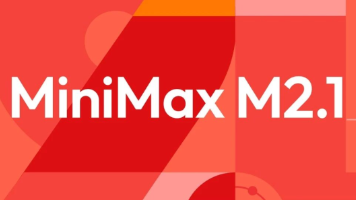Linux磁盘挂载与格式化
Linux磁盘挂载与格式化
1. 理解磁盘挂载
在安装操作系统时, 如果是一块崭新的硬盘, 系统安装程序会提示我们格式化, 并为系统进行分区; 如果是一个已经格式化过的硬盘, 格式化操作就不再是为了让操作系统可以识别, 更多的是清除数据, 也不必再执行分区操作.
在向系统中新增磁盘时, 同样, 如果这是一块未被格式化的崭新磁盘, 系统是无法识别的, 或者, 如果该磁盘上存在的是一个当前系统不能识别的文件系统, 那系统也是不能使用的. 此时, 就像裸机上安装操作系统一样, 需要将这块磁盘格式化成系统可用的格式. 注意: 不能识别是指无法读写, 看还是看的到的.
于是, 就像Windows上的磁盘管理, Linux上的fdisk, 两者都可以看到安装到主机插槽的所有硬盘, 然后就可以执行格式化了.
当然, 如果这块磁盘本身已经被格式化过并且其文件系统可以识别, 那将其安装到主机插槽就相当于接了一块移动硬盘, 直接可以使用了.
但是linux系统比windows多了一个挂载(mount)操作, 因为Linux下所有的磁盘分区都保存在/etc/fstab文件中, 系统安装时自动生成最初始的配置, 然后每次启动主机都会加载其中的分区, 才能使用. 而新的磁盘没有在这个文件中, 所以需要手动挂载, 让系统能够访问到. Windows与许多桌面版Linux系统都在后台运行一个服务, 当插入U盘或是移动硬盘等设备, 系统会自动执行挂载操作, 但Linux服务器版本一般不会有这个服务, 所以, 手动挂载的方式还是很有必要的.
2.1 Windows
- 右键"我的电脑"->“管理”->“磁盘管理”, 然后会看到新分配的磁盘但没有分区.
- 右键"新加卷"(未分区的磁盘), 选择"新建", 按照向导, 一步步, 选择硬盘分区模式、格式化硬盘即可使用.
2.2 Linux
随着服务器中服务的增加, 磁盘容量也逐渐告急, 这时我们需要为服务器添加一块新磁盘. Linux主机中插入一块全新的硬盘, 需要将其格式化让系统能够识别, 然后通过挂载, 可以让程序能够访问到. 具体步骤如下.
root身份执行fdisk -l, 可以看到新的磁盘, 但未分区, 默认为sdb.
$ fdisk -l
Disk /dev/sda: 85.9 GB, 85899345920 bytes
255 heads, 63 sectors/track, 10443 cylinders
Units = cylinders of 16065 * 512 = 8225280 bytes
Sector size (logical/physical): 512 bytes / 512 bytes
I/O size (minimum/optimal): 512 bytes / 512 bytes
Disk identifier: 0x0004a605
Device Boot Start End Blocks Id System
/dev/sda1 * 1 39 307200 83 Linux
Partition 1 does not end on cylinder boundary.
/dev/sda2 39 549 4096000 82 Linux swap / Solaris
Partition 2 does not end on cylinder boundary.
/dev/sda3 549 10444 79481856 83 Linux
Disk /dev/sdb: 21.5 GB, 21474836480 bytes
255 heads, 63 sectors/track, 2610 cylinders
Units = cylinders of 16065 * 512 = 8225280 bytes
Sector size (logical/physical): 512 bytes / 512 bytes
I/O size (minimum/optimal): 512 bytes / 512 bytes
Disk identifier: 0x00000000
对新的磁盘执行分区及格式化的操作.
$ fdisk /dev/sdb
Device contains neither a valid DOS partition table, nor Sun, SGI or OSF disklabel
Building a new DOS disklabel with disk identifier 0x4fe05028.
Changes will remain in memory only, until you decide to write them.
After that, of course, the previous content won't be recoverable.
Warning: invalid flag 0x0000 of partition table 4 will be corrected by w(rite)
WARNING: DOS-compatible mode is deprecated. It's strongly recommended to
switch off the mode (command 'c') and change display units to
sectors (command 'u').
Command (m for help):
m键可以查看帮助, 下面直接创建分区, 一个硬盘可以创建最多4个主分区与多个扩展分区. 我们将这个新磁盘当作一个分区.
Command (m for help): n
Command action
e extended
p primary partition (1-4)
p
Partition number (1-4): 1
First cylinder (1-2610, default 1):
Using default value 1
Last cylinder, +cylinders or +size{K,M,G} (1-2610, default 2610):
Using default value 2610
Command (m for help): w
The partition table has been altered!
Calling ioctl() to re-read partition table.
Syncing disks.
再次使用 "fdisk -l"这个命令来查看会发现出现了/dev/sdb1(说明已经完成了分区工作)
$ fdisk -l
Disk /dev/sda: 85.9 GB, 85899345920 bytes
255 heads, 63 sectors/track, 10443 cylinders
Units = cylinders of 16065 * 512 = 8225280 bytes
Sector size (logical/physical): 512 bytes / 512 bytes
I/O size (minimum/optimal): 512 bytes / 512 bytes
Disk identifier: 0x0004a605
Device Boot Start End Blocks Id System
/dev/sda1 * 1 39 307200 83 Linux
Partition 1 does not end on cylinder boundary.
/dev/sda2 39 549 4096000 82 Linux swap / Solaris
Partition 2 does not end on cylinder boundary.
/dev/sda3 549 10444 79481856 83 Linux
Disk /dev/sdb: 21.5 GB, 21474836480 bytes
255 heads, 63 sectors/track, 2610 cylinders
Units = cylinders of 16065 * 512 = 8225280 bytes
Sector size (logical/physical): 512 bytes / 512 bytes
I/O size (minimum/optimal): 512 bytes / 512 bytes
Disk identifier: 0x4fe05028
Device Boot Start End Blocks Id System
/dev/sdb1 1 2610 20964793+ 83 Linux
对新建的分区进行格式化: 格式化成ext4的文件系统即可
$ mkfs -t ext4 /dev/sdb1
mke2fs 1.41.12 (17-May-2010)
Filesystem label=
OS type: Linux
Block size=4096 (log=2)
Fragment size=4096 (log=2)
Stride=0 blocks, Stripe width=0 blocks
1310720 inodes, 5241198 blocks
262059 blocks (5.00%) reserved for the super user
First data block=0
Maximum filesystem blocks=4294967296
160 block groups
32768 blocks per group, 32768 fragments per group
8192 inodes per group
Superblock backups stored on blocks:
32768, 98304, 163840, 229376, 294912, 819200, 884736, 1605632, 2654208,
4096000
Writing inode tables: done
Creating journal (32768 blocks): done
Writing superblocks and filesystem accounting information: done
This filesystem will be automatically checked every 33 mounts or
180 days, whichever comes first. Use tune2fs -c or -i to override.
下面便是对于分好区的/dev/sdb1 这一个分区进行挂载及访问.
在挂载之前使用df -h查看系统所有可用分区
$ df -h
Filesystem Size Used Avail Use% Mounted on
/dev/sda3 75G 6.4G 65G 10% /
tmpfs 238M 4.0K 238M 1% /dev/shm
/dev/sda1 291M 39M 238M 14% /boot
手动挂载
使用mount /dev/sdb1 /要挂载的目录(自定义), 然后cd /挂载的目录, 即可对其进行存储和访问
自动挂载
修改/etc/fstab即可
使用vim /etc/fstab打开配置的文件, 然后将下面的一行文字添加即可. 这样每次系统启动时就会挂载此磁盘, 直接可以使用.
/dev/sdb1 /media(这个挂载的目录你自己设置即可) ext4 defaults 0 1
挂载后, 再次用df -h查看
$ mount /dev/sdb1 /media
$ df -h
Filesystem Size Used Avail Use% Mounted on
/dev/sda3 75G 6.4G 65G 10% /
tmpfs 238M 4.0K 238M 1% /dev/shm
/dev/sda1 291M 39M 238M 14% /boot
/dev/sdb1 20G 172M 19G 1% /media

AtomGit 是由开放原子开源基金会联合 CSDN 等生态伙伴共同推出的新一代开源与人工智能协作平台。平台坚持“开放、中立、公益”的理念,把代码托管、模型共享、数据集托管、智能体开发体验和算力服务整合在一起,为开发者提供从开发、训练到部署的一站式体验。
更多推荐
 已为社区贡献5条内容
已为社区贡献5条内容








所有评论(0)